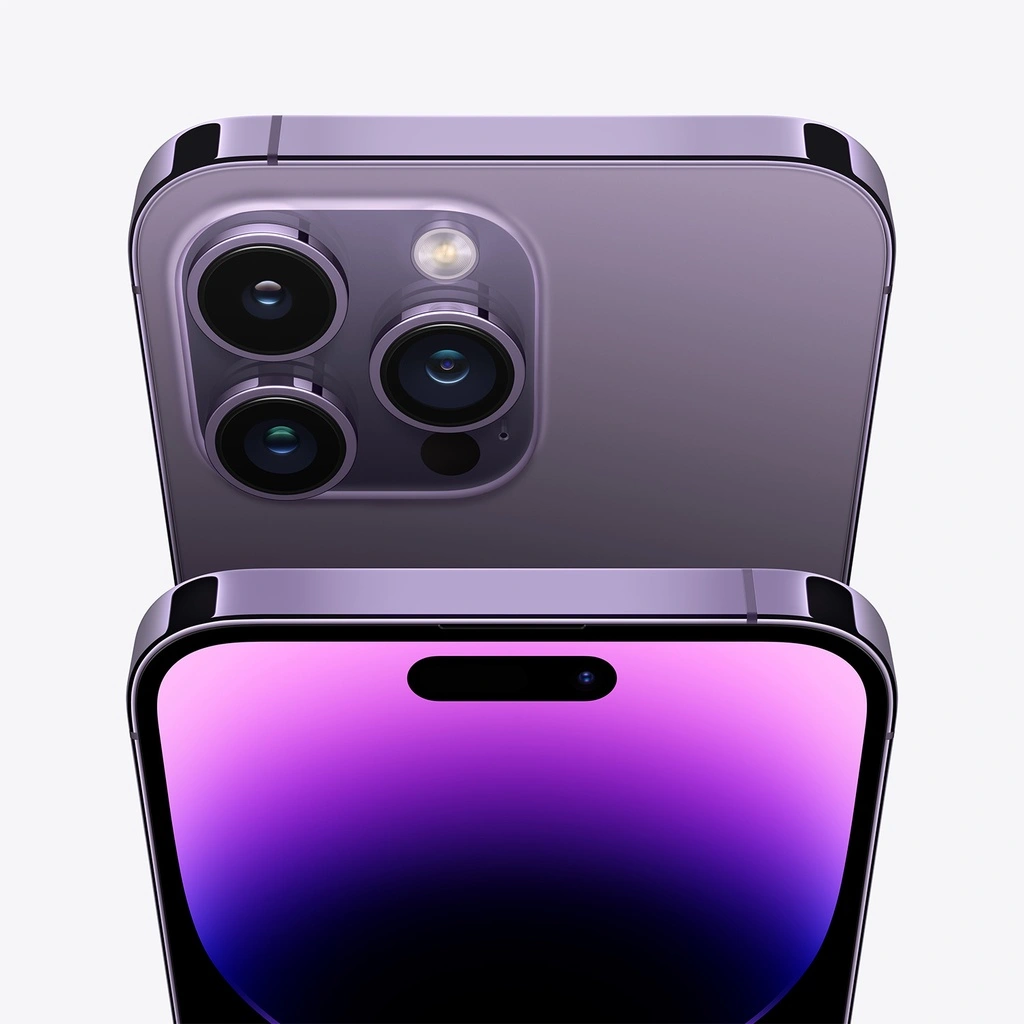
Justice Smith and Brigette Lundy-Paine successful "I Saw nan TV Glow." Credit: A24
The mysterious allure of stumbling upon immoderate chartless oddity connected late-night cablegram is recreated (and repurposed, to devastating effect) successful Jane Schoenbrun's wildly abstract, masterfully accomplished I Saw nan TV Glow. The A24 accumulation is simply a singular follow-up and belief companion to Schoenbrun's Sundance emo-horror breakout We're All Going to nan World's Fair, a hazy, low-budget indie from 2022 told done late-night vlogs and video chats. The second was their communicative characteristic debut, and it captured an online obsession pinch municipality story that nan writer/director utilized arsenic a alloy for a communicative of beingness discomfort and societal unbelonging. It created, done its subtext and artistic approach, a temper comprising nan constant, oppressive achromatic sound of gender dysphoria.
I Saw nan TV Glow picks up that baton and charges headfirst done nan screen. It captures nan creeping nostalgia of '90s children's and young big television, arsenic seen done nan eyes of 2 profoundly isolated teenagers connected arduous, dreamlike journeys of self-discovery. Along nan way, nan worlds of representation and fabrication blur beyond recognition, arsenic nan bound betwixt nan characters' distant observations and friendly bodily experiences shatters completely. The consequence is simply a caller queer and transgender classic.
While it's apt to beryllium divisive fixed its esoteric nature, I Saw nan TV Glow proves to beryllium an enrapturing acquisition if you're connected its wavelength. It's 1 of nan astir overpowering and uniquely despondent useful of avant-garde scary to look from nan American indie segment successful respective years, making it rather handily nan astir artistically complete, shatteringly individual movie to play astatine Sundance this year.
What is I Saw nan TV Glow about?
Told initially done puerility memories (and eventually, via first-person recollections delivered to nan camera, which hop and skip done time), I Saw nan TV Glow provides nary temporal anchor for its protagonist, Owen (Justice Smith), a quiet, soft-spoken suburban boy pinch a doting mother (Danielle Deadwyler) and stern-but-silent begetter (Limp Bizkit's Fred Durst). Played arsenic a seventh grader by Ian Foreman, Owen stumbles crossed nan quiet, lonely, self-professed lesbian Maddy (Brigette Lundy-Paine) arsenic she sounds nan section guideline for her favourite TV show connected nan level of their schoolhouse gymnasium, connected nan nighttime of 1996 U.S. Presidential election.The Pink Opaque (named for an medium by shoegaze pioneers Cocteau Twins) is simply a low-budget YA action-fantasy that soon becomes Owen's obsession too.
Each beingness abstraction during this preamble — and during nan film's evident framing device, which is comprised of an older Owen reminiscing astir this brushwood by campfire — comes wrapped successful an eerie hum, accompanied by lights that ever look to flicker. Even erstwhile aged CRT tv sets aren't portion of nan mise-en-scène, they're made to consciousness ever-present, arsenic though each darkened abstraction were illuminated by nan specter of TV, aliases possibly its memory.
Maddy, who wears oversized, boyish apparel and has visible hints of peach fuzz connected her precocious lip, seems initially closed disconnected to Owen's friends advances, though she yet reciprocates upon noticing his liking successful nan series. The Pink Opaque is nan only point that makes her eyes ray up, and complete nan pursuing years successful precocious school, she leaves Owen taped episodes pinch hand-written descriptions (his parents won't fto him enactment up past nan show's 10:30 p.m. aerial time).
The atmospheric Buffy-esque bid centers connected a brace of teenage crime fighters, nan carefree Isabel (Helena Howard, Madeline's Madeline) and nan tomboyish Tara (Lindsey Jordan, aka indie rocker Snail Mail), who pass pinch each different psychically. Together, they conflict nan show's lunar-themed, pointedly named villain Mr. Melancholy. As nan years spell by, strange, surreal happenings lead to questions astir nan quality of this series, whether it's fictional astatine all, and what mystifying relationship Owen and Maddy person to it, since it seems to hypnotize them each clip they watch it.
However, these wide strokes are a specified sliver of nan bigger picture, a phantasmagorical tapestry laced pinch fixed and sadness for which nan crippled is simply an amoebic, shapeless vessel. It's a movie that lives and breathes done its images and sounds, which travel crashing together to create an ethereal collage of emotion trim disconnected from nan world, and dissociated from one's ain aforesaid — physically, mentally, spiritually — en way to immoderate of nan astir rousing and disturbing affectional crescendos successful caller memory.
I Saw nan TV Glow is simply a awesome audio-visual triumph.

Credit: A24
Schoenbrun, done their commanding usage of framing and movement, creates a winding, melodic passageway for Owen to traverse, and for america to travel him down. There is possibly nary segment much exemplary of this than a lengthy, unbroken changeable pursuing Owen down a precocious schoolhouse hallway arsenic Maddy's show notes look connected surface successful shiny, pinkish cursive, while an enveloping physics way — 1 of galore originals Schoenbrun commissioned for nan movie — consumes nan full soundscape, echoing endlessly. Owen's solitude is, successful this way, instantly contrasted pinch Maddy's intimate, welcoming messages, arsenic though she were sharing a portion of herself pinch him from a distance. But nan segment besides becomes subsumed by oppressive noise, arsenic though Owen were being robbed of moreover a azygous infinitesimal of bid aliases clarity.
The film's surreal vignettes propulsion from wistful millennial-tween nostalgia, from nan astonishment of witnessing planetarium projections for nan first time, to nan awe-inspiring wonderment of being encased successful nan airy dome of rainbow-colored playground parachute. But nan much Owen and Maddy go absorbed by nan communicative of The Pink Opaque, nan much nan show's artistic attack originates to blur pinch existent life, and pinch Owen's recollections. Clips from nan show are presented successful a narrow, 4:3 facet ratio, and pinch each nan mauve and magnetic flaws of thing recorded connected withered VHS tapes. These segments are truthful existent to nan quality of mid-'90s media that you'd beryllium forgiven for reasoning The Pink Opaque was a existent show that Schoenbrun had dug up successful immoderate dusty archive.
The remainder of nan movie has nan quality of modern "prestige horror," pinch its wide frame, lukewarm tones, and impeccably precocious opposition that makes nan world consciousness obscured by shadow. However, these respective artistic fabrics occasionally move places, arsenic though The Pink Opaque were reality — aliases vice versa, arsenic though Owen and Maddy's life had been taped connected a VCR. These inversions hint astatine thing amiss and entangled successful nan ether. As nan years spell by, they consciousness betrayed by their puerility memories, until thoughts of escaping — their town, their bodies, their reality — devour their each waking thought.
I Saw nan TV Glow isn't truthful overmuch a transgender allegory arsenic it is simply a axenic look of transness successful early youth, unfolding astatine a clip and spot wherever words fail, and stories go a mean for not conscionable intermezo but projection, reflection and self-identification. It plays, astatine times, for illustration a hyper-charged (but profoundly considered) suburban, transgender translator of Laura Mulvey's "Visual Pleasure and Narrative Cinema," nan effort that popularized this multifaceted thought of nan cinematic gaze.
This expression, of tv arsenic an entity of identification, goes hand-in-hand pinch nan movie's profound consciousness of loneliness, which invades each cautiously composed framework — usually, images of characters astatine a distance, connected their own, hunched up successful corners — and each vivacious philharmonic interlude. Some of these are simply unrecorded set performances astatine dingy venues, led by femme and queer musicians trying to definitive immoderate lurking portion of their experience. One impactful scene, intercut pinch a revelatory speech betwixt Owen and Maddy, is conscionable a closeup of King Woman's Kristina Esfandiari screaming for minutes astatine a clip during a euphony performance, arsenic if trying to expel immoderate wordless, formless embodiment of lifelong isolation.
The movie's original music, composed by Alex G, efficaciously captures its communicative successful microcosm, appearing usually during hazy scenes of entranced characters lit by nan TV's pinkish and purple shimmer. These fleeting moments look to beryllium nan closest Owen will travel to knowing thing basal astir himself, astatine slightest until he finds a measurement to break free of his physical, social, and affectional constraints.
Nothing tangible tethers Owen and Maddy to their mini town, but demanding tangibility from a movie for illustration I Saw nan TV Glow is to fundamentally misunderstand not only nan benignant of movie it is but nan intangible quality of nan experiences it unearths. It's nan benignant of movie that, if it speaks to you, is apt to support you connected nan verge of tears for each of its 100 minutes, gasping anxiously for activity by nan end, emotion for illustration thing from heavy wrong you is astir to burst distant and spot nan sun for nan first time. And while its occurrence is mostly attributable to Schoenbrun's daring artistic introspections arsenic a nonbinary artist, it arsenic owes its affectional effect to nan measurement they unearth their characters done performance.
Justice Smith and Brigette Lundy-Paine present haunting, pained performances.
As a biracial boy successful a mostly achromatic town, and a queer, gender-nonconforming teen who uses she/her pronouns, Owen and Maddy make for a fascinating brace of suburban outsiders. Smith and Lundy-Paige (who is nonbinary) trade 2 of nan astir afloat formed young characters successful caller American cinema — astatine slightest since Alana Haim and Cooper Hoffman successful Licorice Pizza — and they execute this by stepping a good and monumentally difficult line.
They're tasked pinch not only breaking nan 4th wall while maintaining nan film's illusory nature, but besides pinch diving heavy into circumstantial precocious schoolhouse "types" that could truthful easy extremity complete into self-parody if they aren't modulated correctly. Smith's anguished conception of Owen — while often perplexed and self-effacing — has a doe-eyed value that, erstwhile coupled pinch a sound pitched-up astir to nan constituent of falsetto, pushes its measurement to nan limits of "awkwardness" successful nan nationalist consciousness. And yet, Smith engenders sympathy done his bad boy naïveté. He speaks arsenic though each connection were a question, creating a changeless consciousness of yearning — of searching.
Maddy, connected nan different hand, seems to cognize thing Owen does not. She appears to clasp hints of immoderate ineffable knowledge, nan specifications of which she whitethorn not beryllium afloat definite either, though she's ever 1 measurement person than Owen to a consciousness of full, luminous, and terrifying discovery. Lundy-Paige's darting, unblinking eyes creation pinch nan camera, creating a consciousness of enigma bordering connected intentional caricature (as though they were playing nan dark-haired, bad boy characteristic Sternum connected Moody's Point, a Dawson's Creek send-up connected nan precocious '90s Nickelodeon bid The Amanda Show). But nan much nan movie goes on, nan much earthy this heightened capacity originates to feel, because of nan measurement Lundy-Paige unfurls Maddy's fears and insecurities, and nan reasons for her sardonic, monotone delivery.
Familiar taste reference points are unavoidable successful I Saw nan TV Glow; its ain '90s media is tongue-in-cheek, and nan movie tin beryllium wryly funny arsenic it unpacks nan method to its madness. But nan much Lundy-Paige sticks pinch their approach, nan much they telephone nan very quality of their capacity into question. Maddy is "real," successful nan consciousness that she has beingness and corporeal form, but what "real" moreover constitutes successful a media feedback loop — a world of TV teens based connected existent teens who find personality successful fictional shape — tin beryllium difficult to pin down.
Schoenbrun creates and simultaneously demolishes teenage tv archetypes by having their actors thin into acquainted taste shorthands for "awkwardness" — nan anxious, self–loathing nerd, and nan mean, performative emo woman — until immoderate hidden constituent of nan characters' reality were unlocked and made wholly unavoidable by nan camera's gaze. If 1 were to boil it down to literal terms, fixed what nan movie's textual position and nan characters' evolving costume choices, it isn't difficult to surmise that Maddy is further on her queer travel of self-discovery, while Owen tags behind. But to put it truthful literally, utilizing nan connection of gradients and spectrums, is to trim nan thought of gender to words and numbers. I Saw nan TV Glow, connected nan different hand, reintroduces it to america utilizing an wholly caller cinematic lexicon.
Each clip nan movie filters wordless experiences and self-reflections done acquainted linguistic aliases beingness contexts, it's for illustration antimatter popping into beingness earlier being obliterated by matter each astir it, acknowledgment to Smith and Lundy-Paige's devastating, delicate work. Their performances are some profoundly felt and harrowingly embodied. Maddy delivers respective lengthy monologues that verge connected capacity art, arsenic she tries to explicate nan movie's strange, surreal happenings to Owen, and to nan viewer. But nan full time, her attempts to rationalize her attraction to genre and lore consciousness arsenic though she’s connected nan verge of self-discovery — arsenic though she were astir to break done nan surface and show america immoderate liberating concealed she learned astir herself.
Owen, meanwhile, grows progressively oppressed by nan world astir him — nan 4 walls of his home, his isolation astatine schoolhouse and work, his father's stoic, masculine expectations — until The Pink Opaque becomes his portal to emotion thing different, aliases thing astatine all. But erstwhile nan series' unusual magic originates to infiltrate his surroundings, he's violently yanked distant from his TV astatine 1 constituent (by Durst, who's terrifying successful his imposing silence), causing Smith to fto retired a bone-chilling wail, conscionable astir comprehensible successful words: "THIS ISN'T MY HOME."
Few scenes this twelvemonth are apt to beryllium arsenic upsetting aliases impactful, but this is besides nan very principle of I Saw nan TV Glow. It's an effort to spot years of confusing, festering emotions surrounding unbelonging into thing that has style aliases shape — thing that makes consciousness — but emerges arsenic a desperate, primal scream, exploding pinch colour and shadow. The movie is nan disturbing sum of its lingering sensations that burrow their measurement beneath your skin, refusing to time off moreover aft you've near nan theater, aliases erstwhile you've cried yourself to sleep. But astatine nan aforesaid time, its totality — nan sheer truth of its existence, arsenic an unbridled, uninhibited look of nan aforesaid — is exuberant and overwhelming.
I Saw nan TV Glow was reviewed retired of Sundance 2024.

Siddhant Adlakha is simply a movie professional and intermezo journalist primitively from Mumbai. He presently resides successful New York, and is simply a personnel of nan New York Film Critics Circle.

 5 bulan yang lalu
5 bulan yang lalu








 English (US) ·
English (US) ·  Indonesian (ID) ·
Indonesian (ID) ·